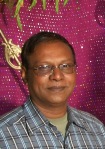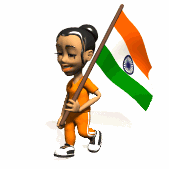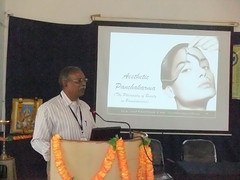19th October
World Breast Cancer Day
 Save Your Breast
Save Your Breast
Breast cancer is considered nowadays the most frequent malignant tumor in women worldwide and the main cause of death between 45 and 55 years old. One million cases are diagnosed annually worldwide, most of them in advanced stages and with a high mortality. However, if it is discovered with time, the disease can be treated successfully.
AROUND 80,000 cases of breast cancer are registered every year in India. Only 50 per cent of these cases are cured due to early detection. This year alone, over 40,000 women in the US will die from breast cancer (that’s one every 12 minutes), and another 200,000 will be diagnosed – what terrible figures! Each one of us could be prey to breast disease; it is my intention to help transform these grim statistics that grip our culture.
One can have the idea about the estimated new cases and deaths from breast cancer in the United States in 2009 by looking at the data below:
- New cases: 192,370 (female); 1,910 (male)
- Deaths: 40,170 (female); 440 (male)

The breast is the upper ventral region of the torso of a primate, in left and right sides, which in a female contains the mammary gland that secretes milk used to feed infants. Both men and women develop breasts from the same embryological tissues. However, at puberty, female sex hormones, mainly estrogen, promote breast development which does not occur in men. As a result, women’s breasts become far more prominent than those of men.
Despite all the efforts that have gone into diagnostics and treatments, breast cancer remains the leading cause of cancer deaths in women. One of the major challenges in bringing this pernicious disease under control is that each individual patient’s breast cancer is unique. A treatment that is effective for one woman may be ineffective or even harmful for another, and there’s been no reliable way of predicting which drug would best serve an individual patient.
In the month of October of 1985, measures were taken by Astrazeneca to advertise and promote awareness program. Thus October is celebrated as Breast Cancer awareness Month. You can find more details of this on EHow. Colour has always been a strongest arm to raise voice. And for the breast cancer awareness PINK is the theme.During this month to raise money, parties are organized such as theme parties or “pink day” (when all has to wear pink attire or accessories”).
Pink ribbon: Symbol for Breast Cancer awareness
Remember, it’s not only a ribbon but a celebration of life for many. This symbol started with Target Pink Charm Bracelet, Susan G. Koman and many who helped to Raise Awareness of Breast Cancer and eradicate breast cancer.
What is Breast Cancer?
 Breast Cancer forms in the tissues of the breast, usually on the ducts (tubes that carry milk to the nipple) and the lobules (glands that make milk). It occurs in both men and women, although male breast cancer is rare. Read More
Breast Cancer forms in the tissues of the breast, usually on the ducts (tubes that carry milk to the nipple) and the lobules (glands that make milk). It occurs in both men and women, although male breast cancer is rare. Read More
Symptoms
Unfortunately, breast cancer is known as a “silent killer,” because often, you don’t see symptoms until the disease has progressed significantly. The best way to stay on top of cancer symptoms is to do monthly self-exams to check for lumps, thickening, or changes, such as dimpling  around the nipple, which may signify the onset of breast cancer.
around the nipple, which may signify the onset of breast cancer.
Getting to know your own breasts is crucial in the prevention of cancer. That’s because you’re going to know your own breast tissue far better than any doctor ever could, even though of course you can and should have a professional medical exam on a regular basis to check for just these changes. Regular mammograms at a certain age, such as over the age of 40, are also imperative if you want to prevent that monster.
 [more about Breast @wikipedia]
[more about Breast @wikipedia]
[Read about Breast Cancer at Wikipedia]
[Read about Breast More at Ayurvedaonline]
[Read Breast Cancer on Ayurvedaonline]










































